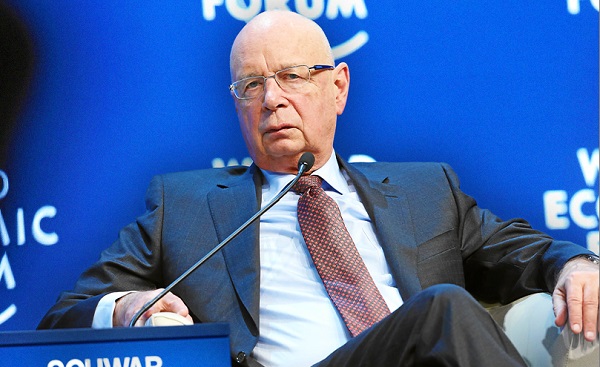International
FBI Director Christopher Wray uses Trump assassination attempt to attack encryption

FBI Director Christopher Wray testifies before the House Judiciary Committee
From LifeSiteNews
FBI Director Christopher Wray has used a congressional hearing organized after the assassination attempt on Donald Trump to launch another attack against encryption and use that as justification for the state of the investigation.
Appearing before the House Judiciary Committee last week, Wray was supposed to speak about the FBI’s investigation into this extremely serious incident, as well as about what the committee said is “the ongoing politicization” of the agency under his and Attorney General Merrick Garland’s direction.
But Wray turned it into blaming encrypted apps and services for the pace of the investigation. Quite extraordinarily for a person who is supposed to be highly knowledgeable about security, the FBI chief came across as oblivious to how essential encryption is for people’s online security – from their bank transactions to their communications.
Instead, he complained that it is difficult to break into accounts on encrypted platforms, that is, to break encryption – a situation that the FBI head said has “unfortunately become very commonplace.”
READ: Everything you need to know about the failed assassination attempt of Donald Trump
He went on to claim that law enforcement at all levels, federal, state, and local finds it “a real challenge.”
Reports say that the FBI had “early success” in breaking into the phone of the shooter, Thomas Matthew Crooks, using tools provided by Cellebrite. This is an Israeli company that oddly advertises its wares as “accelerating justice.”
Wray did not reveal which platforms host the accounts belonging to Crooks that the FBI says it has trouble accessing but noted that “legal process returns” are awaited to accomplish that goal.
And in the meanwhile, he told the Committee, U.S. law enforcement still doesn’t know why Crooks did what he did, implying that investigators are hampered by their inability to break encryption on apps, even though they have access to the shooter’s phone and laptop.
But, the “motive or ideology” that drove Crooks to attempt to assassinate Trump remains unclear, according to Wray. And he is strongly suggesting – always referencing encryption as the culprit – that this may remain so for good.
“Some places we’ve been able to look, some places we will be able to look, some places we may never be able to see, no matter how good our legal process is,” the FBI director told the committee.
Reprinted with permission from Reclaim The Net.
International
New York Times publishes chilling new justification for assisted suicide

From LifeSiteNews
Even happy, healthy lives without major issues can warrant needless ending if they are ‘complete.’
Notorious secular “ethicist” Peter Singer has co-authored an opinion piece in The New York Times positing a chilling new rationale for assisted suicide: the determination that one’s life is simply “complete.”
Princeton psychologist Daniel Kahneman died in March 2024 at age 90. His cause of death was not disclosed at the time, but a year later, The Wall Street Journal revealed that Kahneman had emailed friends the day before to tell them he was traveling to Switzerland to avail himself of the country’s legal physician-assisted suicide.
“I think Danny wanted, above all, to avoid a long decline, to go out on his terms, to own his own death,” WSJ journalist and longtime friend of the deceased Jason Zweig wrote. “Maybe the principles of good decision-making that he had so long espoused — rely on data, don’t trust most intuitions, view the evidence in the broadest possible perspective — had little to do with his decision.”
On April 14, The New York Times published a guest essay by the infamous Singer, a pro-infanticide Princeton bioethics professor, and philosophy professor Katarzyna de Lazari-Radek, who shared that they too knew of Kahneman’s plans and that days before he had told them, “I feel I’ve lived my life well, but it’s a feeling. I’m just reasonably happy with what I’ve done. I would say if there is an objective point of view, then I’m totally irrelevant to it. If you look at the universe and the complexity of the universe, what I do with my day cannot be relevant.”
“I have believed since I was a teenager that the miseries and indignities of the last years of life are superfluous, and I am acting on that belief,” Kahneman reportedly said. “I am still active, enjoying many things in life (except the daily news) and will die a happy man. But my kidneys are on their last legs, the frequency of mental lapses is increasing, and I am 90 years old. It is time to go.”
Singer and de Lazari-Radek argued that this was an eminently reasonable conclusion. “(I)f, after careful reflection, you decide that your life is complete and remain firmly of that view for some time, you are the best judge of what is good for you,” they wrote. “This is especially clear in the case of people who are at an age at which they cannot hope for improvement in their quality of life.”
“(I)f we are to live well to the end, we need to be able to freely discuss when a life is complete, without shame or taboo,” the authors added. “Such a discussion may help people to know what they really want. We may regret their decisions, but we should respect their choices and allow them to end their lives with dignity.”
Pro-lifers have long warned that the euthanasia movement devalues life and preys on the ill and distraught by making serious medical issues (even non-terminal ones) into grounds to end one’s life. But Singer and de Lazari-Radek’s essay marks a new extreme beyond that point by asserting that even happy, healthy lives without major issues can warrant needless ending.
“Instead of seeing every human life as having inherent value and dignity, Singer sees life as transactional: something you are allowed to keep by being happy, able-bodied, and productive — and something to be taken away if you are not,” Cassy Cooke wrote at Live Action News.
In America, nine states plus the District of Columbia currently allow assisted suicide. In March, Delaware took a step closer to becoming the 10th with its own legalization bill, although it has yet to become law. Another bill recently failed in Maryland.
Support is available to talk those struggling with suicidal thoughts out of ending their lives. The Suicide & Crisis Lifeline can be reached by calling or texting 988.
Business
‘Great Reset’ champion Klaus Schwab resigns from WEF

From LifeSiteNews
Schwab’s World Economic Forum became a globalist hub for population control, radical climate agenda, and transhuman ideology under his decades-long leadership.
Klaus Schwab, founder of the World Economic Forum and the face of the NGO’s elitist annual get-together in Davos, Switzerland, has resigned as chair of WEF.
Over the decades, but especially over the past several years, the WEF’s Davos annual symposium has become a lightning rod for conservative criticism due to the agendas being pushed there by the elites. As the Associated Press noted:
Widely regarded as a cheerleader for globalization, the WEF’s Davos gathering has in recent years drawn criticism from opponents on both left and right as an elitist talking shop detached from lives of ordinary people.
While WEF itself had no formal power, the annual Davos meeting brought together many of the world’s wealthiest and most influential figures, contributing to Schwab’s personal worth and influence.
Schwab’s resignation on April 20 was announced by the Geneva-based WEF on April 21, but did not indicate why the 88-year-old was resigning. “Following my recent announcement, and as I enter my 88th year, I have decided to step down from the position of Chair and as a member of the Board of Trustees, with immediate effect,” Schwab said in a brief statement. He gave no indication of what he plans to do next.
Schwab founded the World Economic Forum – originally the European Management Forum – in 1971, and its initial mission was to assist European business leaders in competing with American business and to learn from U.S. models and innovation. However, the mission soon expanded to the development of a global economic agenda.
Schwab detailed his own agenda in several books, including The Fourth Industrial Revolution (2016), in which he described the rise of a new industrial era in which technologies such artificial intelligence, gene editing, and advanced robotics would blur the lines between the digital, physical, and biological worlds. Schwab wrote:
We stand on the brink of a technological revolution that will fundamentally alter the way we live, work, and relate to one another. In its scale, scope, and complexity, the transformation will be unlike anything humankind has experienced before. We do not yet know just how it will unfold, but one thing is clear: the response to it must be integrated and comprehensive, involving all stakeholders of the global polity, from the public and private sectors to academia and civil society …
The Fourth Industrial Revolution, finally, will change not only what we do but also who we are. It will affect our identity and all the issues associated with it: our sense of privacy, our notions of ownership, our consumption patterns, the time we devote to work and leisure, and how we develop our careers, cultivate our skills, meet people, and nurture relationships. It is already changing our health and leading to a “quantified” self, and sooner than we think it may lead to human augmentation.
How? Microchips implanted into humans, for one. Schwab was a tech optimist who appeared to heartily welcome transhumanism; in a 2016 interview with France 24 discussing his book, he stated:
And then you have the microchip, which will be implanted, probably within the next ten years, first to open your car, your home, or to do your passport, your payments, and then it will be in your body to monitor your health.
In 2020, mere months into the pandemic, Schwab published COVID-19: The Great Reset, in which he detailed his view of the opportunity presented by the growing global crisis. According to Schwab, the crisis was an opportunity for a global reset that included “stakeholder capitalism,” in which corporations could integrate social and environmental goals into their operations, especially working toward “net-zero emissions” and a massive transition to green energy, and “harnessing” the Fourth Industrial Revolution, including artificial intelligence and automation.
Much of Schwab’s personal wealth came from running the World Economic Forum; as chairman, he earned an annual salary of 1 million Swiss francs (approximately $1 million USD), and the WEF was supported financially through membership fees from over 1,000 companies worldwide as well as significant contributions from organizations such as the Bill & Melinda Gates Foundation. Vice Chairman Peter Brabeck-Letmathe is now serving as interim chairman until his replacement has been selected.
-

 International2 days ago
International2 days agoPope Francis has died aged 88
-

 International2 days ago
International2 days agoJD Vance was one of the last people to meet Pope Francis
-

 2025 Federal Election1 day ago
2025 Federal Election1 day agoOttawa Confirms China interfering with 2025 federal election: Beijing Seeks to Block Joe Tay’s Election
-

 COVID-191 day ago
COVID-191 day agoNearly Half of “COVID-19 Deaths” Were Not Due to COVID-19 – Scientific Reports Journal
-

 2025 Federal Election1 day ago
2025 Federal Election1 day agoHow Canada’s Mainstream Media Lost the Public Trust
-

 Business2 days ago
Business2 days agoCanada Urgently Needs A Watchdog For Government Waste
-

 2025 Federal Election15 hours ago
2025 Federal Election15 hours agoBREAKING: THE FEDERAL BRIEF THAT SHOULD SINK CARNEY
-

 International2 days ago
International2 days agoPope Francis Dies on Day after Easter







